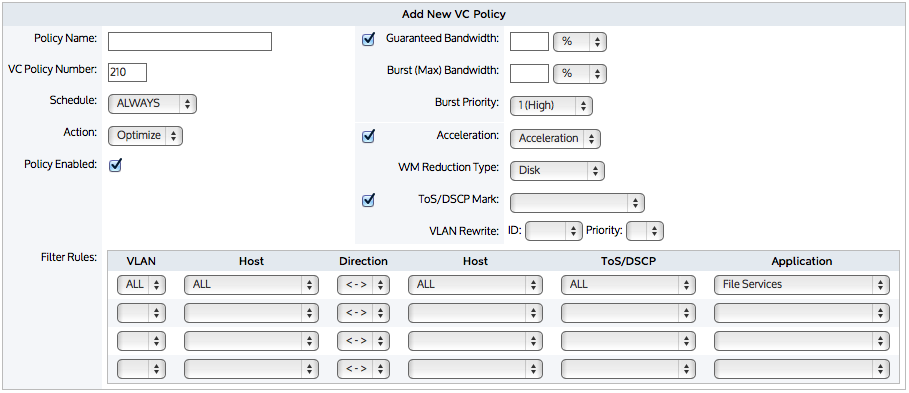Policies overview
Policies define what actions to perform on specific targeted traffic. The policies can specify whether:
- to optimize the traffic by bandwidth shaping, acceleration, or marking the packets.
- to block the traffic by discarding the packets.
- to monitor the traffic by ignoring the packets.
- or to redirect the traffic to a specific URL.
The policy managed traffic can then be filtered by:
- Application or application group
- Hosts or subnets
- Hosts or subnets that are communicating with other specific hosts or subnets
- VLAN
- ToS/DSCPDifferentiated Services Code Point markings
- Time of day
You can apply any combination of these filters. For example, the policy could be targeted to traffic between a particular branch and headquarters, which has particular ToS markings on a particular VLAN during work hours.
Furthermore, you can also add more than one filter. That is, the policy could target a particular branch site for Netflix and the same branch site for Silverlight.
When creating policies, they are added to the policy librarythe Exinda repository for network objects and their definitions. If any changes are made to a policy definition they will affect all other virtual circuits that use that policy.

Adding a new VC policy.
Policies are part of the policy tree. To learn how circuits, virtual circuits, and policies work together, see Policy Tree.
Related Topics
- Creating a policy for a specific Virtual Circuit
- Creating a policy for use with any Virtual Circuit
- Configuring a policy to accelerate traffic
- Configuring a policy to shape bandwidth
- Configuring a policy to discard (block) traffic
- Configuring a policy to redirect HTTP traffic to an HTTP Response object webpage
- Configuring a policy to redirect HTTP traffic to a URL
- Configuring a policy to mark packets